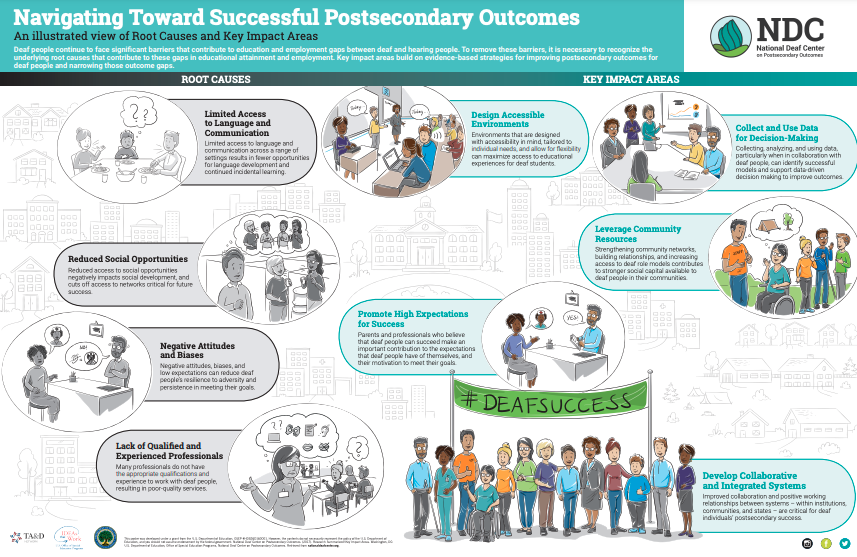

National Deaf Center on Postsecondary Outcomes
The University of Texas at Austin
College of Education, SZB 5.110
1912 Speedway, Stop D4900 Austin, TX 78712
Phone/VP (512) 436-0144



This work is licensed under a Creative Commons International License.
This website was developed under a grant from the U.S. Department of Education, OSEP #H326D210002. However, the contents do not necessarily represent the policy of the U.S. Department of Education, and you should not assume endorsement by the federal government.
Fill out this form to get help from the NDC team. Can’t see the form below? Click here to contact the NDC team.
| Cookie | Duration | Description |
|---|---|---|
| cookielawinfo-checkbox-analytics | 11 months | This cookie is set by GDPR Cookie Consent plugin. The cookie is used to store the user consent for the cookies in the category "Analytics". |
| cookielawinfo-checkbox-functional | 11 months | The cookie is set by GDPR cookie consent to record the user consent for the cookies in the category "Functional". |
| cookielawinfo-checkbox-necessary | 11 months | This cookie is set by GDPR Cookie Consent plugin. The cookies is used to store the user consent for the cookies in the category "Necessary". |
| cookielawinfo-checkbox-others | 11 months | This cookie is set by GDPR Cookie Consent plugin. The cookie is used to store the user consent for the cookies in the category "Other. |
| cookielawinfo-checkbox-performance | 11 months | This cookie is set by GDPR Cookie Consent plugin. The cookie is used to store the user consent for the cookies in the category "Performance". |
| viewed_cookie_policy | 11 months | The cookie is set by the GDPR Cookie Consent plugin and is used to store whether or not user has consented to the use of cookies. It does not store any personal data. |